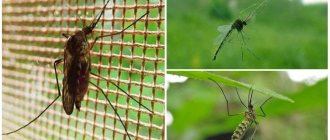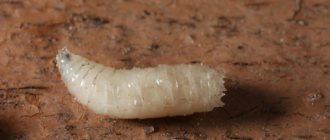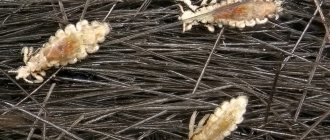Many gardeners are faced with the problem of moles in their summer cottage. For most, this is a whole tragedy; gardeners are frightened by earthen piles and believe that now their harvest has come to an end. Is it so? According to agronomists and experienced plant growers, moles are helpers, not pests.
Yes, animals can cause some concern and inconvenience, but they are not comparable to the benefits that moles bring. But everything is in order. Let’s understand the “pedigree” of the insectivore, its life activity, and dispel all the myths that are attributed to the animals.
Do they actually cause harm?
There is nothing in nature that would be left unattended or used for harm. Moles actually bring many benefits to the garden plot:
- Firstly, they eat the larvae of harmful insects, which can cause much more damage to plants than the animal.
- Secondly, moles loosen the soil and, thanks to their tunnels, an aeration process occurs in the soil, and the area will not be in danger of becoming swampy.
- Thirdly, mole is the number one remedy against mole crickets, Colorado potato beetles and other pests. If a mole lives on the site, mice and shrews are unlikely to appear, but they are the ones who pretty much spoil the crops.
Now let’s figure out what harm moles cause. Firstly, and perhaps lastly, the animal can damage the root system of plants when tearing up passages. The roots hang over the “roads” of the moles, and as a result, the tree or shrub may wither. There are also aesthetic inconveniences when moles live on the site. Few people are touched by earthen heaps everywhere. Especially if they are scattered across a smooth and neat lawn. That's all the harm.
Experienced gardeners have learned to benefit from being close to a mole. Moreover, neither moles, nor gardeners, nor plants suffer. But first things first.
Danger from the appearance of moles in the country
Moles prefer soils that are optimal for growing all crops. If even one mole has settled in your garden, and they rarely live alone, you urgently need to start fighting it. These animals quickly produce offspring with excellent appetite. Moles feed on rhizomes, tubers, shoots, greens, worms, and insects.
It is easy to detect the appearance of animals on the site by dug up small mounds of earth. These are exits to the surface from numerous underground passages.
- Let us list the main problems that a summer resident faces if moles have settled on his property:
- one animal is capable of digging up to 20 m of new passages in a day, while it breaks everything that it encounters on the way: beds, rhizomes of trees and shrubs, cables laid underground, plastic water supply and sewerage pipes;
- overnight, a family of pests can completely dig up a standard 4-acre plot of land, leaving mounds of soil on the surface;
- death of plants due to torn and gnawed roots, because the animals dig their tunnels in the upper layers of the soil;
- moles love to eat earthworms, which bring invaluable benefits to the soil, improving its structure and composition;
- animals are carriers of a large number of dangerous diseases, as well as lice and parasites;
- Since moles dig holes deep in the ground, in the underlying infertile layers, this depleted soil is mixed with the upper layers rich in useful substances, resulting in soil depletion and a decrease in crop yields.
How to drive a mole out of your area: modern devices
Having figured out what harm and benefit moles bring, you can begin to “expel” the animal. Agronomists do not recommend driving away moles forever. Why? From April to June, harmful insects are very actively awakening, developing, and breeding in the garden plot. The larvae actively eat young plants. In a word, spring and the first month of summer are the times when crops are actively eaten by pests. The mole will help get rid of the larvae as early as April, let him destroy the plant enemies, and then politely ask him to leave the site using humane methods for several months, when the root system of the crops begins to grow.
You can drive away the orderly using modern technologies and folk methods. Both have proven themselves. The mole leaves for two to three months, just during the period of active plant growth.
The most effective device for expelling moles is an ultrasonic device.
He gently and unobtrusively drives the animal away from the garden. True, along with the moles, all the beneficial insects leave. Keep this in mind. There will be no one on the site for 2-3 months. Why does the animal leave? The fact is that moles have a very acute sense of touch, smell and hearing. They react painfully to vibration, unpleasant sounds, and smells.
The device operates on this principle. It produces ultrasonic noises that the animals pick up, they cannot stand it, they get scared and leave the area. This method is considered one of the most humane and effective. The persecution of moles begins in June, when they have already done the main work useful for the garden.
Modern methods of fighting moles
Mechanical method of catching moles
Currently, various mole traps have appeared on the market. Some mole catchers kill an animal caught in a trap, others simply deprive the mole of the opportunity to escape. Lethal mechanisms include scissor traps, harpoon traps and strangulation traps - all of these traps can be purchased at garden pavilions. It is most advisable to place traps in early spring close to the active feeding tunnel: the female caught in them will die without producing offspring, and this will make it much easier for you to solve the problem in the future.
In the photo: Mole traps
You can make a mole trap yourself: you need to dig a three-liter jar half filled with water in the middle of the existing feeding tunnel below its level. For digging, it is most convenient to use a garden auger. The jar is covered so that light does not fall on it. A mole that falls into a jar usually drowns.
In the photo: Catching moles in jars
How to guess which tunnel is used by a mole? You can find out this way: compact the mounds of soil dug by moles with your foot and mark these places with a bright pole. If after a day in any of these areas the ground is swollen again, it means that this is where the trap needs to be placed. Remove a layer of earth to open the passage, dig a hole, install a trap in it and cover it from the light from above.
- Repelling mosquitoes with plants
Keep in mind: moles are very sensitive, and if on the way to the trap the animal finds even a lump of earth, it will turn back and you will miss it!
Chemical method of controlling moles
A pesticide such as zinc phosphide is used as a poison for moles. It is placed in the bait and left in an active tunnel, which is found using a thin probe. Once you find a tunnel, carefully rotate the probe to make a hole above it, then place a teaspoon of poisoned bait into the tunnel and cover the hole with a lump of earth. You need to make several such baits along the entire length of the course. However, do not expect immediate results; give the mole time to find your treat in his underground labyrinths. If after a while you notice the appearance of new molehills, lay out the bait again.
It must be said that traps and baits that kill moles are a cruel and extreme measure of control, which is resorted to when the pests have proliferated greatly and are occupying increasingly large areas. If there are few of them, and there are children and pets in the garden, it is better to consider alternative methods of getting rid of moles.
Folk methods of struggle
Traditional methods are based on the same principles as the ultrasound device. They are designed to scare the animal with noise and stop emergence to the surface with unpleasant odors. Only the most effective and humane ways to combat moles are described here.
Experts do not recommend filling holes and exits with chemicals - this will damage the soil, and therefore the plants.
The moles will still leave and then return again. It is not advisable to use petroleum products and other monstrous means; they will primarily harm crops and the person himself later. Let's be reasonable people and adopt proven, simple and humane methods.
- "Empty plastic bottle." The method is based on moles’ intolerance to noise. An empty plastic or glass bottle is dug into the ground with the neck up. The air turbulence created by the wind in the neck of the bottle produces a hum and whistle. The animals get scared by the constant noise and leave. You need to take care of the bottle so that no water is poured into it, otherwise the entire noise effect will disappear. The method has proven itself and is recommended by experienced gardeners.
- We plant “fragrant” plants. Marigolds, dill, parsley, celery - moles cannot tolerate all these plants. Plant them throughout the area, arranging them in decorative curtains. Just by the end of June they will grow up and begin to emit an unpleasant odor for moles. Prepare seedlings in advance and plant plants in May. Moles leave until the plants dry out in the fall.
- Tin cans guard the garden. Another “noisy” way. It works flawlessly until the structures are removed. For installation you will need an iron stake similar to a crowbar. It is stuck into the ground as deep as possible. Empty tin cans are hung on stakes. In windy weather, cans knock on iron, the unpleasant sound goes into the ground and forces moles to leave the garden. The animal does not appear until the structure is removed. Many have tried this method and were very satisfied. No one was hurt, all crops remained healthy.
- Fish waste. Fish waste - heads, entrails - is placed in the exits of mole holes. Insectivorous animals cannot stand the smell of rotten fish and hastily retreat back home. The disadvantage of this method is that over time, fish waste inevitably rots, the smell becomes thinner and disappears - the moles can return. However, initially it works flawlessly!
All these methods of fighting moles have been tested and work flawlessly. They do not harm the soil, plants, or moles themselves. As a result, the garden is safe, the larvae were destroyed in the spring - all that remains is to harvest the crop, safe and sound.
How to effectively fight moles
There are many different ways to help get rid of these rodents, the most common of which are:
- repellers;
- traps;
- granular preparations;
- grids;
- folk remedies.
Means of controlling moles can be simply mechanical, in particular, such as nets and traps. They work on the principle of mousetraps and allow you to catch animals in burrows. However, there is absolutely no guarantee that new moles will not settle in the garden. That is why the effectiveness of this method is not very high.
In addition, among the measures to combat moles, one can highlight the use of granular preparations containing essential oils and lavender extract. The disadvantage of this method is the high cost of the drug, the effect of which will end in just a few months.
Among the effective means of combating moles is the use of special repellers. These devices produce various sounds that travel within the soil. They scare away animals that leave the areas in entire families.
This method is quite safe and simple, and also very reliable. However, it is worth considering the range of the device on the site.
Mole lifestyle
So, a mole is a small insectivorous mammal. He spends his entire life underground, only periodically rising to the surface, throwing out the dug soil. The front paws of moles are real shovels. They turn their palms outward so that it is more convenient to dig the ground in front of them and throw it back. The animal builds a nest at a depth of about 2 m, under the roots of large trees or under buildings. This makes his home practically invulnerable. Numerous passages diverge from the underground mole house in different directions. Underground “corridors” serve to collect and store food.
Moles are very voracious creatures. They eat an amount of food equal to their own weight per day. They feed several times a day, and in the intervals between feedings they sleep in the nest, curled up into a ball. A mole can remain hungry for no more than 14-17 hours, after which it simply dies. Therefore, the animal directs all its energy to search for food.
After the supply of food is exhausted, the mole is forced to expand “its” territory. Even one active animal is capable of digging through a multi-tiered branched network of passages, laying up to 50 m of “corridors” in one night. That is why the areas conquered by the pest are so significant.
These animals are solitary by nature, do not live in families and even attack relatives who come into their area. They make an exception only during the breeding period (April-June). Little moles grow very quickly. Already at the age of 1.5 months they reach adult size and leave their father’s house, going in search of their own land.
A mole's life underground
The mole is underground all day and night and is on the move almost all the time, digging tunnels. It usually settles in places where the soil is moist and easy to dig. These are forest edges, meadow and floodplain lowlands. They do this work for a reason; they are looking for food, which is why the passages are called feeding passages.
The mole is a frequent visitor to garden plots. He won the strong dislike of gardeners.
They are located shallow, only 5–10 cm underground, but the permanent passages are at a depth of 15–20 cm. He does not have enough strength to lift such a thickness with his head; he has to push out part of the earth after a short distance. It turns out to be a so-called otnorok. It’s easy to see where it will appear: suddenly the soil begins to move slightly, then the loose part rises and grows before our eyes, becoming a mound.
Favorite food is earthworms. They even store them for the winter in their burrow. And so that the worms do not escape and remain alive, but paralyzed, the moles bite off their heads. The pointed teeth of the predator catch both pupae and larvae, as well as adult insects. And even a mouse or a shrew is too tough for him!
If the mole does not find food within 12 hours, it may die.











